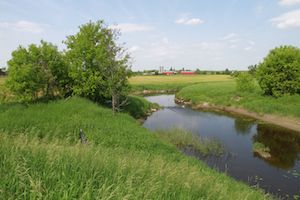How It Works
Dairy farmers have a vested interest in the sustainability of their farms, their animals and their land, and are committed to providing excellent stewardship of the environment - doing more with less means improved productivity, reduced waste, and managing resources responsibly. Under proAction, dairy farmers advance the principle of continuous improvement, so consumers can be confident that the milk they enjoy was produced with the long-term health of our environment in mind.
Environmental Protection and Resource Management at the Farm Level
All Canadian dairy farmers must meet provincial environmental regulations to safeguard natural resources. As part of the Environment module, farmers also develop individual plans to identify and mitigate risks on their farms, while pursuing practices to preserve our air, land, water resources, and enhance biodiversity.
Topics covered within these plans may include, but are not limited to, biodiversity, climate change mitigation, nutrient management, energy efficiency, pest management, soil conservation and health, water use and management, and woodlands and wetlands management.

